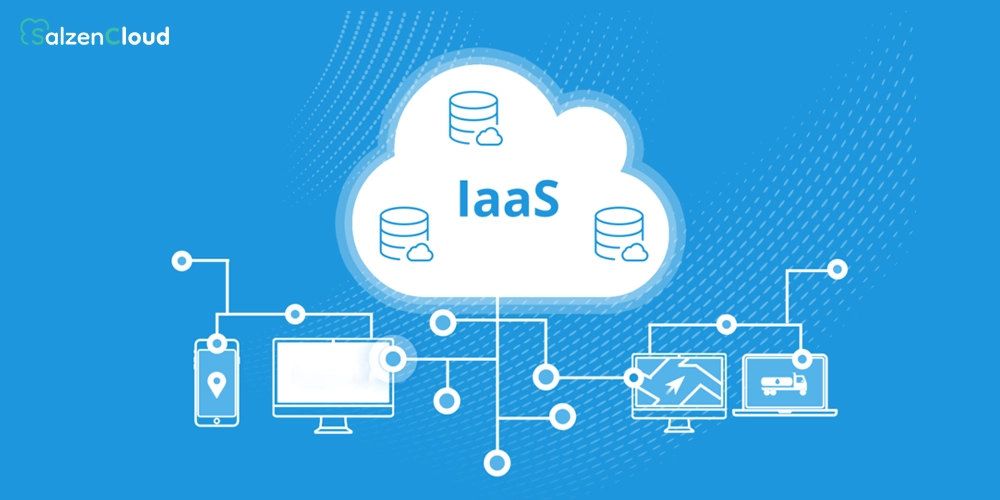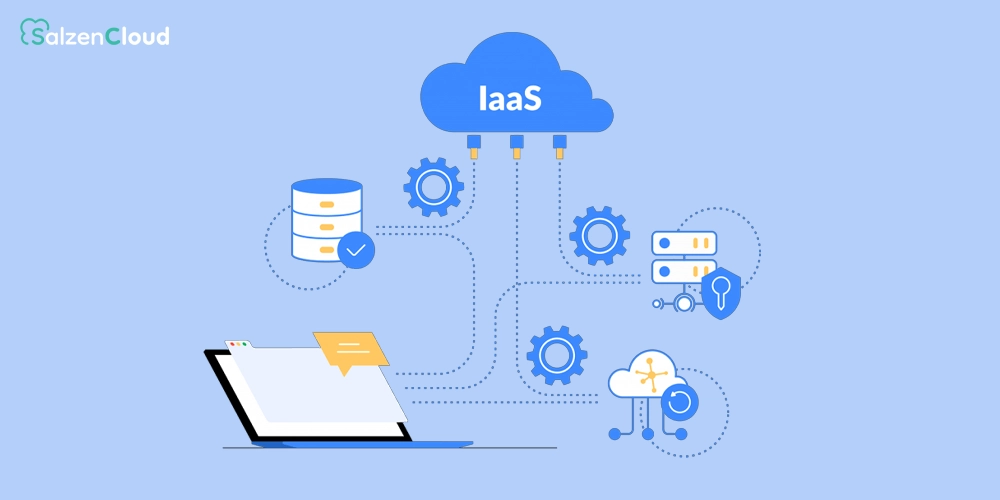What is IaaS? Understanding the Basics and Benefits for Your Business
January 12, 2025

Imagine running your business with the ability to grow or shrink as needed easily; that too, without the concerns of hardware or IT infrastructure. That is the strength of Infrastructure as a Service.
A recent Gartner report indicates that the global IaaS market will expand by 24.2% in 2025 as organisations increasingly embrace adaptable cloud solutions to remain competitive.
Whether a startup or a well-established corporation, IaaS architecture enables you to access advanced infrastructure, enhance efficiency, and curb expenses. Are you prepared to explore how IaaS can revolutionise your business? Let us break it down!
What is Infrastructure as a Service?
It is extremely important to grasp the IaaS meaning before exploring its benefits. The IaaS full form is Infrastructure as a Service which denotes a cloud computing framework. IaaS supplies virtualised computing resources via the internet. This encompasses networking, servers, storage, and other infrastructure components historically owned and managed by organisations on-site.
With IaaS, businesses can lease these resources as needed. This allows them to incur costs only for what they utilise rather than making substantial initial investments in physical infrastructure.
In straightforward terms, it represents a method for organisations to delegate their IT infrastructure requirements. However, they still maintain oversight over their systems and applications.
The Core of IaaS: The IaaS Architecture
The framework of IaaS constitutes the foundation of how it functions and delivers value. IaaS architecture comprises several essential elements collaborating to provide organisations with scalable and cost-effective IT infrastructure. These elements include:
- Compute Resources: Virtual machines that put forth processing power for applications.
- Storage: Virtualised storage systems that firms can scale based on their needs.
- Networking: Virtual networks that enable seamless communication between diverse systems and services.
- Security: Cloud-powered security measures that shield data and applications.
Collectively, these elements establish a dynamic and adaptable environment. This setup lets enterprises utilise robust infrastructure without the need to manage the underlying hardware.
Benefits of IaaS for Your Business

Embracing IaaS can significantly transform how your enterprise functions. The benefits of IaaS are plentiful. This makes it an appealing option for enterprises of every magnitude.
Below are the top four benefits of IaaS for your business. Along with these, real-world Infrastructure as a Service examples from leading companies illustrate how they leverage IaaS for success.
- Cost Efficiency
The substantial decrease in capital expenditures is one notable benefit of Infrastructure as a Service in cloud computing. Conventional infrastructure necessitates massive upfront investments in hardware, data centres, and maintenance expenses. With IaaS in cloud computing, organisations can eliminate these costs. Instead, they pay solely for the resources they utilise, converting high CapEx into more predictable operational expenditures.
Example: A medium-sized eCommerce enterprise, Zappos, which previously depended on in-house servers for its online shop, encountered high maintenance expenses and capacity challenges during peak sales periods. After migrating to IaaS (such as AWS), the organisation was able to adjust resources dynamically according to traffic demands. This decreased their IT costs by 30% annually and eliminated the necessity to invest in costly hardware.
- Scalability and Flexibility
IaaS in cloud computing puts forth organisations with the adaptability to scale down or up according to demand. This is essential for businesses that encounter varying workloads. It lets them prevent over-provisioning resources that remain unused during off-peak periods or under-provisioning when demand escalates.
Example: Netflix, the worldwide video streaming powerhouse, experienced a spike in users during special event broadcasts. With AWS Infrastructure as a Service, they were able to rapidly expand compute and storage capacity to manage the surge in traffic. This ensured a smooth viewing experience for viewers. Once the demand decreased, the organisation scaled down, saving funds on unused resources.
- Enhanced Security
With increasing concerns regarding cyber threats, IaaS providers adopt advanced security protocols. These protocols may be beyond the capabilities of smaller enterprises with in-house infrastructure. Such protocols include encryption, firewalls, and multi-factor authentication. This ensures the shielding of sensitive business information.
Example: A financial services organisation, HSBC, built their PayMe business app leveraging Microsoft Azure for its IaaS requirements. They harnessed the built-in security functionalities such as Azure's security centre, automated patch management, and encryption at rest. This enabled the organisation to comply with rigorous regulatory standards and safeguard sensitive customer information from cyber threats.
- Faster Time-to-Market
The capability to swiftly deploy and refine applications and services is a transformative advantage for organisations. Infrastructure as a Service in cloud computing enables companies to minimise the time required to establish new infrastructure. This lets them concentrate on development and innovation instead of dedicating time to hardware acquisition and configuration.
Example: A startup focused on creating a mobile application, Instacart, accelerated its time to market by utilising the IaaS offered by Google Cloud Platform. Rather than spending months setting up physical servers, the organisation launched its app on virtual machines. This significantly decreased the development time and enabled them to introduce their product in half the time initially projected.
Each of these examples of Infrastructure as a Service demonstrates how IaaS can provide substantial, real-world advantages. These benefits assist organisations in optimising their resources, enhancing security, and accelerating growth. All of this occurs while retaining control over their infrastructure requirements.
Final Words
The future of business technology is unquestionably in the cloud, and IaaS in cloud computing is leading the charge in this transformation. By offering organisations flexible, scalable, and economical infrastructure solutions, IaaS is empowering businesses to lower IT expenses, expedite innovation, and remain competitive today.
By comprehending Infrastructure as a Service in cloud computing, investigating its genuine significance, and unlocking its potential, you can ensure that your organisation is prepared to seize the vast opportunities within the cloud computing domain. Therefore, if you are seeking to enhance your business through cloud computing, now is the moment to explore Infrastructure as a Service and discover firsthand how this powerful resource can transform your operations and promote long-term success.
To learn more about Infrastructure as a Service, disaster recovery, and automated testing, explore the Salzen Cloud website.
recent blogs


How to Successfully Migrate Your Business to the Cloud in 2025?
Read More
